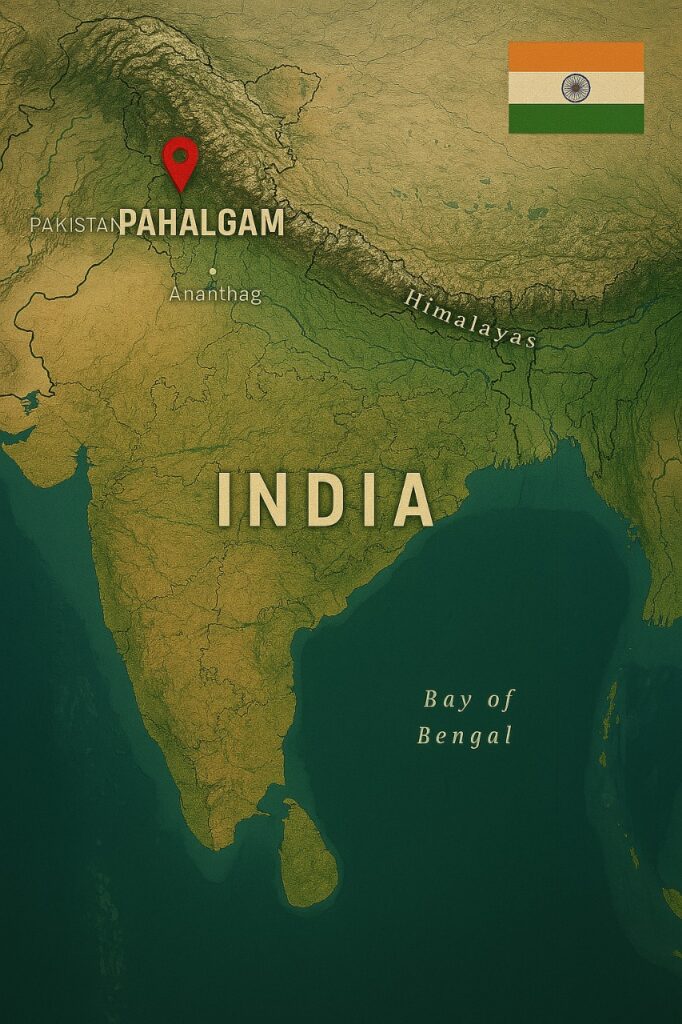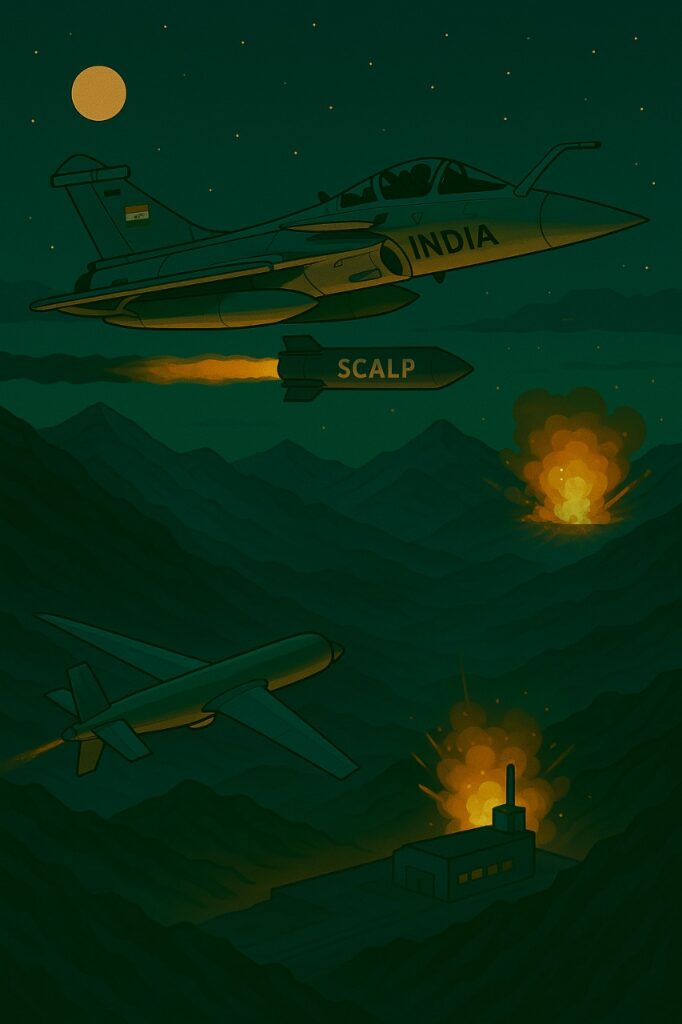In a decisive move to counter terrorism, India launched Operation Sindoor on May 7, 2025. This meticulously planned operation targeted terrorist infrastructure in Pakistan and Pakistan-administered Kashmir. Employing advanced weaponry like SCALP and HAMMER missiles, along with indigenous kamikaze drones, the Indian Armed Forces showcased their precision strike capabilities without breaching international borders.
Background: The Catalyst for Action

The operation was a direct response to the Pahalgam terror attack on April 22, 2025, where 28 Indian civilians lost their lives. Intelligence reports attributed the attack to Pakistan-based terrorist groups, prompting India to take swift and calculated military action to neutralize the threat.
Strategic Objectives of Operation Sindoor
- Neutralize Terrorist Infrastructure: Target and destroy key terrorist camps and launch pads.
- Avoid Escalation: Conduct strikes without violating Pakistani airspace to prevent broader conflict.
- Demonstrate Military Precision: Utilize advanced weaponry to showcase India’s defense capabilities.OpIndia India Today Defence Security Asia Wikipedia
Key Military Assets Deployed

1. Rafale Fighter Jets
India’s fleet of Rafale jets played a pivotal role in the operation. Equipped with cutting-edge avionics and weapon systems, these aircraft served as the primary delivery platforms for the precision-guided munitions.
2. SCALP Cruise Missiles
- Description: The SCALP (Storm Shadow) is a long-range, air-launched cruise missile designed for deep-strike missions.
- Capabilities:
- Range exceeding 250 km.
- High-precision targeting with minimal collateral damage.
- Penetration of fortified structures.
- Deployment: Launched from Rafale jets to strike high-value terrorist targets deep within enemy territory.mint
3. HAMMER Precision-Guided Bombs
- Description: The HAMMER (Highly Agile Modular Munition Extended Range) is a modular air-to-ground weapon designed for precision strikes.
- Capabilities:
- Effective against a variety of targets, including bunkers and moving vehicles.
- Extended range allows for stand-off deployment.
- Deployment: Used to target medium-range objectives, ensuring destruction of enemy assets without endangering Indian aircraft.The Economic Times
4. Kamikaze Drones (Loitering Munitions)
- Description: Indigenously developed SkyStriker drones, also known as kamikaze drones, are designed to loiter over target areas and engage upon identification.
- Capabilities:
- Real-time surveillance and target acquisition.
- High precision with minimal collateral damage.
- Cost-effective and efficient for dynamic battlefield scenarios.
- Deployment: Employed to neutralize mobile or time-sensitive targets, enhancing the operation’s overall effectiveness.India Today Business Standard Firstpost www.ndtv.com Business Today Wikipedia
Execution of the Operation
- Duration: Approximately 23 minutes.
- Targets: Nine key locations identified as terrorist hubs, including Bahawalpur, Muridke, and Muzaffarabad.
- Outcome:
- Destruction of 21 terrorist camps.
- Elimination of over 100 militants, including high-ranking operatives.
- No reported civilian casualties, underscoring the precision of the strikes.The Indian Express Wikipedia
- Destruction of 21 terrorist camps.
Strategic Significance
1. Technological Prowess
The successful deployment of advanced weaponry highlighted India’s growing self-reliance in defense technology and its ability to conduct complex military operations with surgical precision.
2. Tactical Superiority
By utilizing stand-off weapons and avoiding airspace violations, India managed to achieve its objectives while minimizing the risk of escalation, demonstrating superior tactical planning.
3. Deterrence
The operation served as a strong message to terrorist organizations and their sponsors, reinforcing India’s zero-tolerance policy towards terrorism.
International Response
Global reactions were mixed, with some nations expressing concern over potential escalation, while others acknowledged India’s right to self-defense. The operation sparked discussions on the effectiveness of precision strikes in counter-terrorism efforts.India Today
Conclusion
Operation Sindoor stands as a testament to India’s commitment to safeguarding its citizens and maintaining regional stability. Through the adept use of advanced military technology and strategic planning, India successfully neutralized significant terrorist threats while avoiding broader conflict.
Note: This article is based on information available up to May 10, 2025. For the latest updates, please refer to official government releases and reputable news sources.









+ There are no comments
Add yours